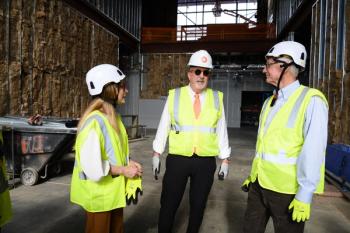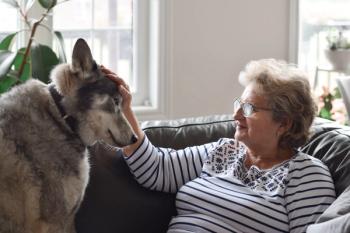
Q&A: Hospital design that puts proof to work for veterinarians
Wayne Usiak, AIA, explains the proven insights that architects are incorporating into veterinary clinic design.
Wayne Usiak, AIA, worked for six years on hospitals in human healthcare, and that's there where he ran across the emerging concept of evidence-based design: careful studies of what really works in hospital design to improve healing, patient well-being, and staff member satisfaction. Now Usiak—a Veterinary Economics Editorial Advisory Board member and founder of BDA Architecture in Albuquerque, N.M.— brings proven design techniques to veterinary hospitals. In this interview, Usiak explains what makes evidence-based design special and how it can work for you:
DVM360.com: How did you become interested in evidence-based design?
I was a human-hospital architect for a major firm in the United States, and the initial focus of evidence-based design was in single-occupancy rooms. We saw incredible gains in [patients'] healing and lowered stress when they didn't have to share a room.
Then they found a way to make staff more efficient in the rooms: They stopped making the rooms mirror images of each other, with bathrooms back to back. It saved money to put the plumbing for bathrooms closer together, but efficiency would suffer when staff walked in one room with the bed on the right, then the other room with the bed on the left.
How do you adapt human-hospital design into veterinary hospitals?
A lot of it doesn't seem to apply directly, but then I noticed that the healing studies were based on patients' and staff members' responses to sensory input. And animal sensory perception is even higher: Animals see better, smell better, and hear better than humans. We knew lots of natural sunlight, ultraviolet light, and outdoor views aided in recovery for human patients. Human patients asked for 22 percent less pain medication when they recovered in rooms with daylight.
Better lighting worked on staff members, too. In one case, a hospital decreased dispensing errors by 31 percent by improving staff members' moods and work lighting with sunlight. We used more natural light and more focused task lighting. We found a 29 percent energy savings in lighting and a 17 percent health and productivity gain.
Also, when human hospitals paid attention to ergonomics and used better chairs, they received 20 percent to 84 percent fewer complaints of musculoskeletal problems from staff. When hospitals brought in more fresh air, hospitals saw absenteeism drop 9 percent to 20 percent and saw 20 percent or more reductions in complaints about on-the-job headaches.
Have veterinarians really bought into these health-focused design trends yet?
I don't ever have a difficult time when I explain why I'm making these suggestions. I can tell a veterinarian that if we raise a wall three feet, we can get natural daylight into the wards, and here's why that will help with patient healing and team member satisfaction. Practice owners usually ask about cost. Our contractors give us an idea, and sometimes it's too expensive; sometimes it's not.
For example, we worked on a 5,000-square-foot hospital with a number of air-conditioning units all over the building. It cost us more, but it offered incredible thermal control and comfort. The practice owner told us, "This is better than even I thought it would be."
Evidence-based design will trickle down from human hospitals into veterinary hospital design, just like "green" and environmentally friendly ideas have. Certain architectural design ideas are being proven all the time, and everybody's learning that they work.
Newsletter
From exam room tips to practice management insights, get trusted veterinary news delivered straight to your inbox—subscribe to dvm360.




